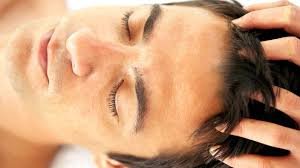Head massagers have become increasingly popular tools for relaxation, stress relief, and even promoting better scalp and hair health. When used correctly, these devices can stimulate circulation, reduce tension, and support overall wellness. However, many people either misuse them or don’t take full advantage of their potential. Learning the proper techniques and understanding the right conditions for use can help you maximize the benefits of your massager for head and incorporate it more effectively into your daily self-care routine.
Whether using a manual scalp brush or an electric head massager for hair growth, the goals remain the same: stimulate blood flow, nourish hair follicles, and encourage a relaxed mind. Applying the right amount of pressure and using consistent, circular motions can activate acupressure points and awaken the scalp without causing irritation or damage.
The head and scalp are often overlooked in wellness routines, even though they are major contributors to stress accumulation and hair quality. Regularly using a massager for head can also enhance the absorption of oils, serums, or treatments. It complements other products you might use, such as a hair volumizer, by creating a more receptive scalp environment and improving the texture and bounce of your hair naturally.
Preparing Your Scalp Before Use
Before using a scalp massager, it’s essential to ensure your scalp is clean and free of excessive product buildup. This helps prevent clogged follicles and allows for more effective stimulation. If you use styling products, dry shampoo, or hair sprays regularly, consider washing your hair before a massage.
A clean scalp ensures that the massager’s bristles or nodes don’t encounter resistance or drag against product residue, which could lead to irritation. For an enhanced experience, some users like to apply a few drops of essential oil, such as lavender, rosemary, or peppermint, before massaging. This nourishes the scalp and adds aromatherapeutic benefits to the experience.
Choosing the Right Type of Massager
There are several types of massagers for scalp available, each offering a different experience:
Manual Massagers: Often shaped like a claw or spider, these require hand movement and pressure control. They are lightweight, portable, and easy to use.
Brush Massagers: These resemble traditional hairbrushes but have soft silicone bristles. They’re ideal for dry or wet use, including in the shower.
Electric Massagers: Powered by batteries or a charging dock, these come with vibration, kneading, or pulsing features and often offer multiple settings for customized comfort.
Your choice will depend on your comfort level, budget, and specific needs—whether you’re targeting relaxation, improving hair texture, or relieving tension headaches.
Understanding the Technique
Technique is essential to gain the full benefit. Unlike a hasty scrub while shampooing, a proper head massage involves intentional and consistent movements:
- Start from the base of your skull and work your way up to the crown in circular motions.
- Apply light to moderate pressure, depending on comfort; avoid pressing too hard, which can overstimulate the scalp or cause inflammation.
- Spend extra time on areas where you feel tension or tightness, such as the temples or near the neck.
Depending on your goals, a typical session should last 5 to 15 minutes. A shorter daily massage may relieve stress, while deeper hair-focused massages may be more beneficial when done 2–3 times a week.
Enhancing Results with Oils and Serums
Using natural oils during your massage can amplify the therapeutic and cosmetic benefits. Oils help hydrate the scalp, reduce dryness or flaking, and provide essential follicular nutrients. Some popular options include:
- Coconut oil for moisture and softness
- Castor oil for nourishing roots and promoting thickness
- Rosemary oil for stimulating circulation and potential hair growth benefits
Apply a small amount of oil to your fingertips or directly to the massager’s surface and work it through your scalp. This can enhance relaxation while allowing for smoother movements.
Serums formulated for scalp health or growth can also be gently massaged after using your massager. The increased blood flow post-massage helps deliver active ingredients more efficiently to hair follicles.
Incorporating Head Massages Into Your Routine
Consistency is key when using a scalp massager. While occasional use can bring temporary relief, regular sessions lead to long-term results. The ideal frequency depends on your personal goals:
Daily Use: Best for stress relief, relaxation, and healthy scalp circulation.
2–3 Times Weekly: Ideal if your focus is improving hair health, reducing shedding, or enhancing product absorption.
Before Bedtime: Head massages before sleep can ease mental tension and promote deeper, more restful sleep.
If you have a sedentary lifestyle or experience frequent screen-related fatigue, incorporating a head massage into your routine can help balance the effects of physical inactivity and mental overload.
Avoiding Common Mistakes
Although massagers for stress relief are generally safe, certain practices can undermine their benefits or cause discomfort:
Overuse: Excessive massaging—especially with electric tools—can overstimulate the scalp or cause sensitivity.
Poor Hygiene: Not regularly cleaning the massager can lead to bacterial growth and scalp irritation. Always rinse and sanitize your tool after use, especially if oils or products were applied.
Using on Wet Hair: Be cautious with electric massagers on wet hair unless the product is waterproof. Wet hair is also more fragile, so gentle handling is essential.
Neglecting Pressure Control: Applying too much force can damage the roots or cause headaches. Let the tool do the work; your role is to guide it, not press it into your scalp.
Pay attention to how your scalp feels during and after each session. If you notice redness, flaking, or soreness, reduce frequency or adjust your pressure level.
Combining with Other Relaxation Practices
Consider combining your head massage experience with complementary wellness practices to make it even more therapeutic. These not only enhance relaxation but also provide a holistic approach to stress relief and self-care:
Breathing Exercises: Pair your massage with deep, slow breaths to encourage relaxation and oxygen flow.
Aromatherapy: Use essential oil diffusers in the background to stimulate the senses and elevate the ambiance.
Guided Meditation: Listening to calming music or spoken meditation can help you achieve a deeper mental release during the massage.
Warm Compresses: Before the massage, apply a warm towel to your head to soften the scalp and open pores.
Incorporating such elements can turn a simple massage into a rejuvenating spa-like ritual at home.
Mastering the Art of Scalp Care
Using a scalp massager is about more than just relaxing—it’s about learning to engage with your body in ways that promote lasting well-being. Head massages can significantly improve circulation, reduce tension, and support healthier, shinier hair when done correctly. With proper technique, the right tools, and consistent practice, you’ll enjoy the calming effects and nurture your scalp in ways that boost overall hair vitality.
Whether your goal is stress relief, better sleep, or a healthier scalp, a head massager can be an excellent ally. Master the basics and avoid the pitfalls, and soon, you’ll experience just how transformative a few mindful minutes a day can be.


